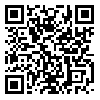BibTeX | RIS | EndNote | Medlars | ProCite | Reference Manager | RefWorks
Send citation to:
URL: http://hakim.tums.ac.ir/article-1-1403-en.html

 , Mirfeizi SZ
, Mirfeizi SZ 
 , Vejdani M *
, Vejdani M * 
 1, Vafaee-najar A
1, Vafaee-najar A 
 , Kachooei AR
, Kachooei AR 
 , Ariamanesh AS
, Ariamanesh AS 
 , Ganji R
, Ganji R 
 , Salari H
, Salari H 
 , Mehrabi Far MJ
, Mehrabi Far MJ 
 , Esmaeili H
, Esmaeili H 

Ebrahimipour H1 (PhD), Mirfeizi SZ2 (MD), Vejdani M3 * (MSc Student), Vafaee-najar A1 (PhD), Kachooei AR4 (MD), Ariamanesh AS5 (MD), Ganji R6 (MD), Salari H7 (PhD Candidate), Mehrabi Far MJ8 (BSc), Esmaeili H9 (PhD)
1 Health Sciences Research Center, Department of Health Management, School of Health,
Mashhad University of Medical Sciences, Mashhad, Iran
2 Department of Rheumatology , School of Medicine, Mashhad University of Medical Sciences, Mashhad, Iran
3 Student Research Committee, School of Health, Mashhad University of Medical Sciences, Mashhad, Iran
4 Mashhad University of Medical Sciences, Department of Orthopedics, Ghaem Hospital, Mashhad, Iran
5 Department of Orthopedics, School of Medicine, Mashhad University of Medical Sciences, Mashhad, Iran
6 North Khorasan University of Medical Sciences, Imam Ali Hospital, Bojnurd, Iran
7 School of Public Health, Tehran University of Medical Sciences, Tehran, Iran
8 Department of Radiology, Ghaem Hospital, Mashhad University of Medical Sciences, Mashhad, Iran
9 Health Sciences Research Center, Department of Biostatistics, School of Health,
Mashhad University of Medical Sciences, Mashhad, Iran
Original Article
Received: 27 Aug 2014, Accepted: 19 Nov 2014
Abstract
Introduction: Knee pain is a common complaint among patients and Magnetic Resonance Imaging (MRI) is repeatedly used to diagnose the problem. There are insufficient scientific evidences to make appropriate decisions in clinical diagnosis in Iran. This study aimed to evaluate medical costs resulting from inappropriate prescriptions of the MRIs for knee joint, using RAND Method in Ghaem Hospital- 2013.
Methods: First, we conducted a qualitative study to develop the knee MRI indications and scenarios using the RAM (RAND Appropriated Method). Then, data were gathered through a cross-sectional study. To determine the appropriateness of the prescriptions, the histories of 115 patients with knee pain were assessed.
Results: Sixty three scenarios for knee MRI (in 26 indications) were extracted from the selected clinical guidelines. Among scenarios, 50.79% were considered as appropriate, 19.04% were uncertain, and 30.17% were inappropriate. From 115 cases of knee MRI prescriptions, 63 cases (54.8%) were considered as inappropriate, 17 cases (14.8%) were uncertain, and 35 cases (30.4%) were appropriate. The economic burden of inappropriate prescriptions was 38159100 Rials .
Conclusion: Developing, customizing, and performing clinical guidelines are necessary and may improve quality of care and prevent unnecessary costs.
Key words: MRI, RAND appropriateness method, knee joint, guideline
Please cite this article as follows:
Ebrahimipour H, Mirfeizi SZ, Vejdani M, Vafaee-najar A, Kachooei AR, Ariamanesh AS, et al. Evaluation of Medical Costs Resulting from Inappropriate Prescriptions of Magnetic Resonance Imaging for Knee Joint, using RAND Method in Ghaem Hospital- 2013. Hakim Health Sys Res 2015 17(4): 278- 286.
* Corresponding Author: Mashhad, Street Daneshgah, Daneshgah 18, School of Health, Department of Health and Management. Tel: +98- 935- 5721880. E-mail: marjan_vejdani@yahoo.com
Received: 2015/05/13 | Accepted: 2015/05/13 | Published: 2015/05/13
| Rights and permissions | |
 |
This work is licensed under a Creative Commons Attribution-NonCommercial 4.0 International License. |



